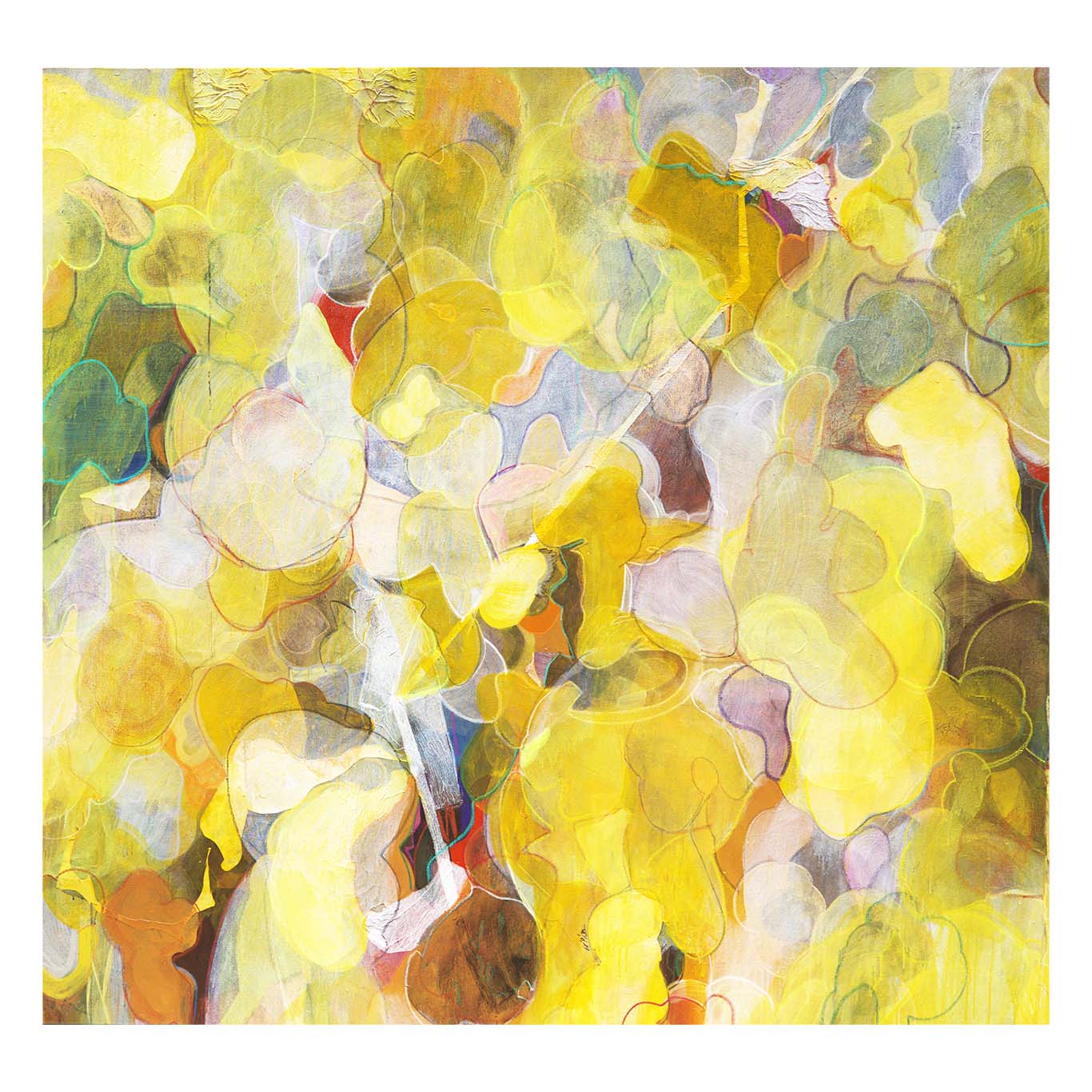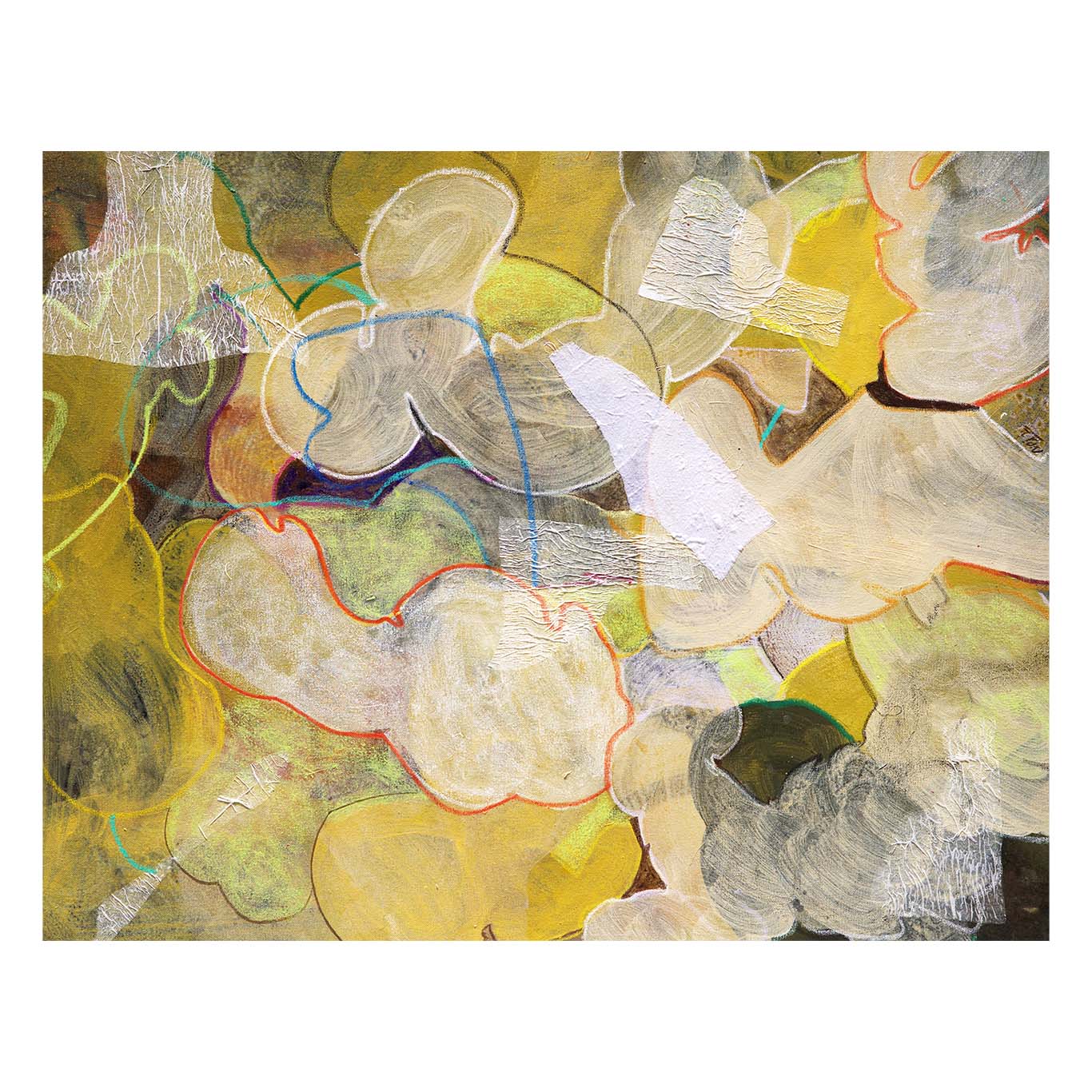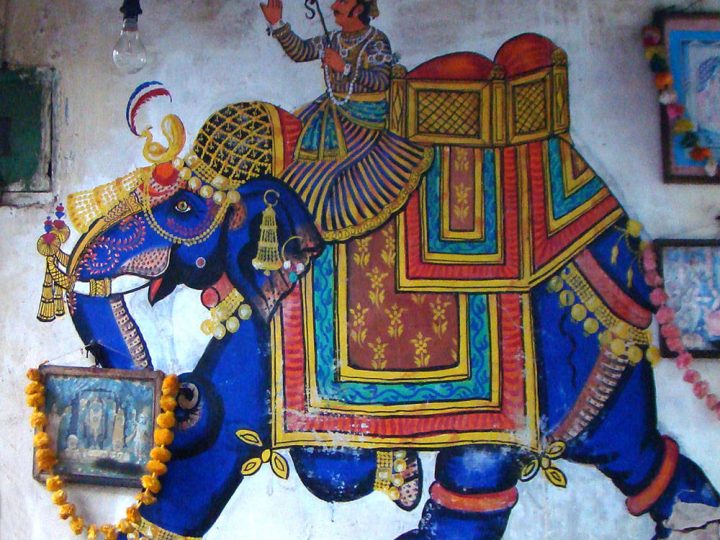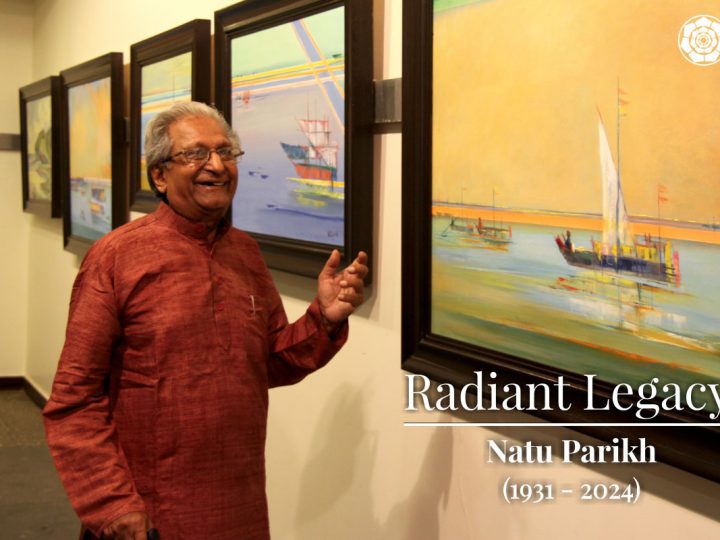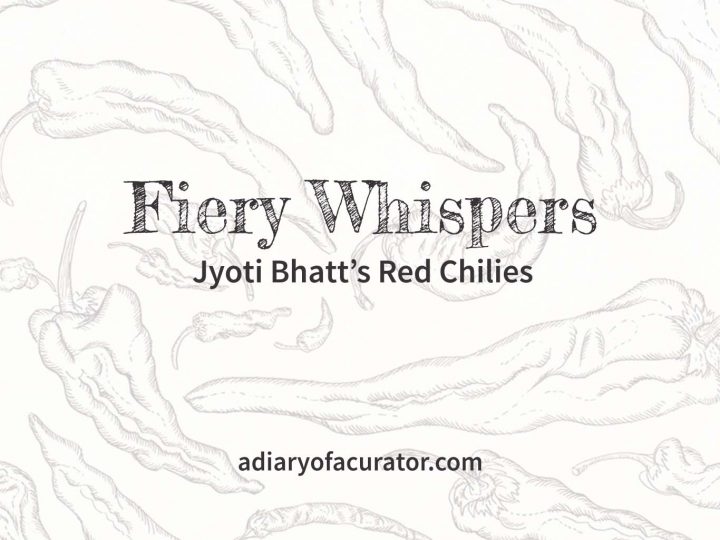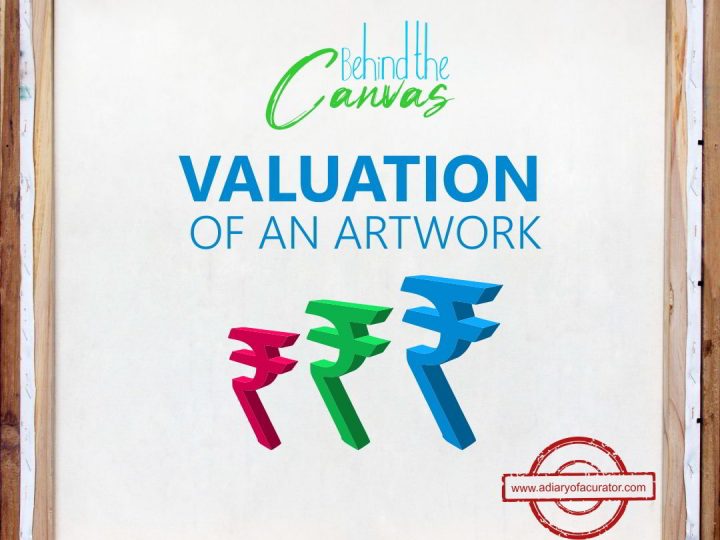रंग, राख और रिश्ते | Rang Raakh aur Rishtey
“रंग” is the emotion in Vipin’s work, more felt than seen. It carries his moods, his memories, and the silences that live between them.
“राख” is what remains after something burns. It is not an end but a revelation. It holds the hidden layers, the forgotten textures, and the lives beneath the surface.
“रिश्ते” are the quiet thread running through it all. Family, village, soil, and memory are woven into every fragment. His work is made of connection, not just composition.
Where रंग becomes राख, and राख becomes रिश्ते, a cycle of feeling, fading, and finding.
Vipin’s art is a gentle weaving of emotion, memory, and belonging told through colour, ash, and relationships.
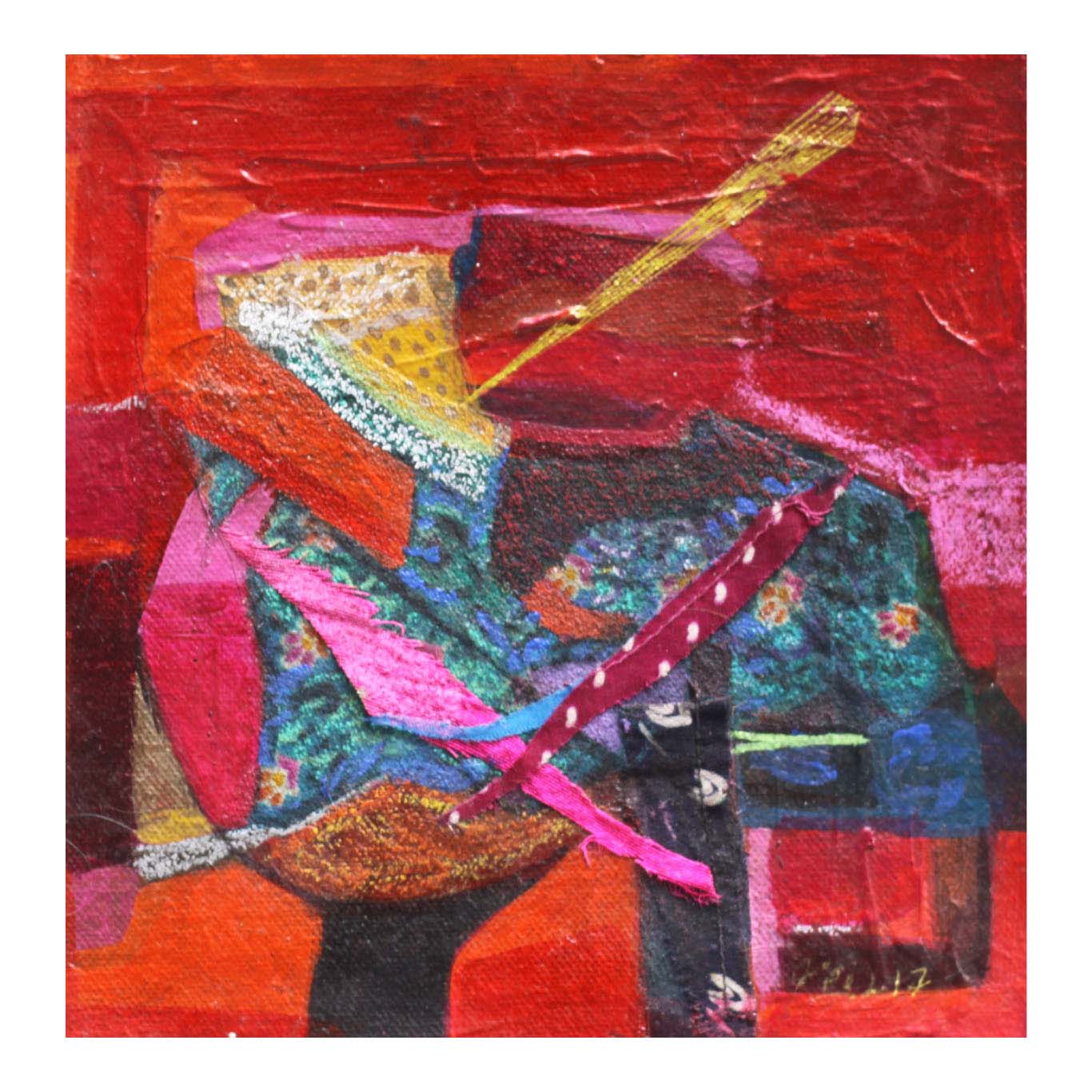
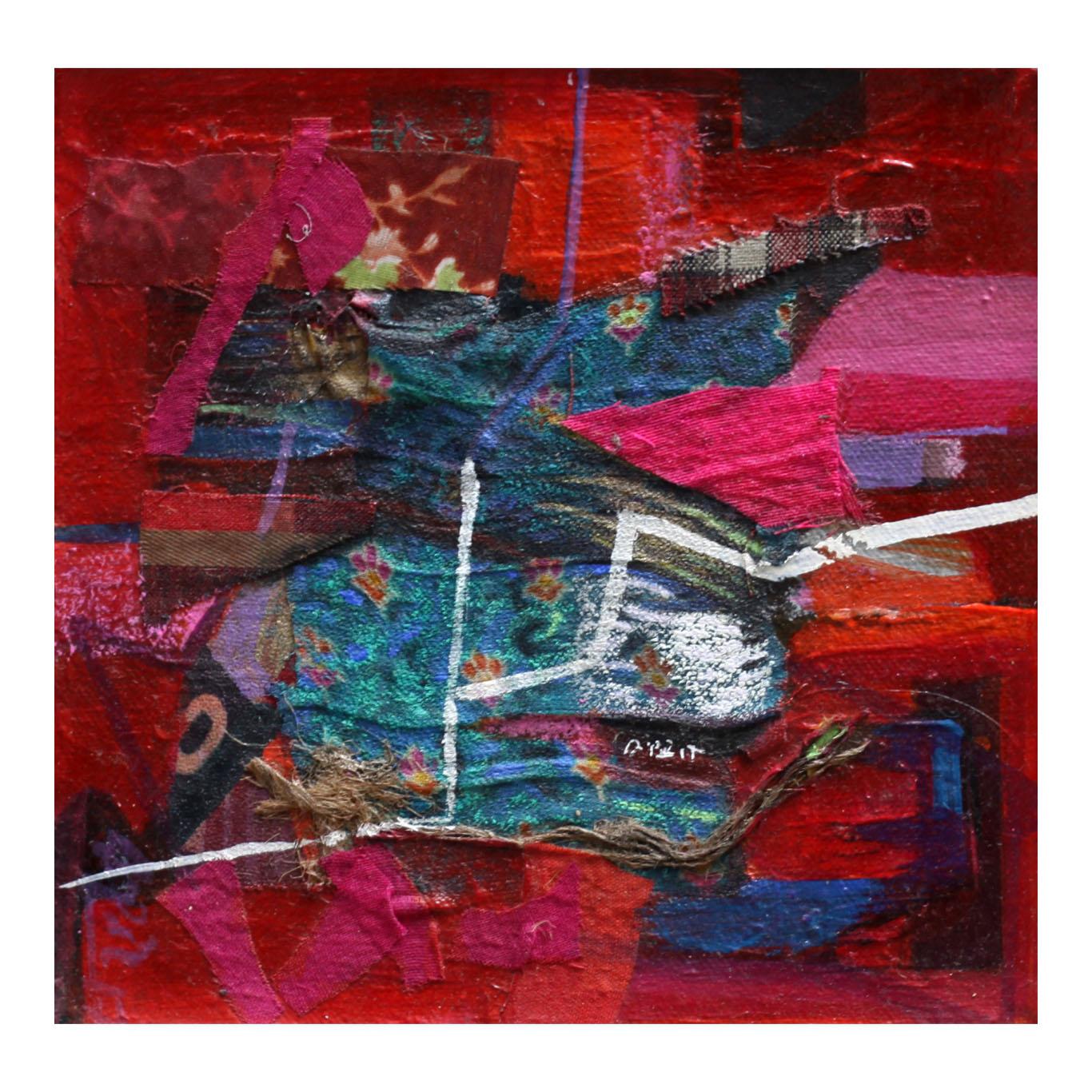
Root and Reflection
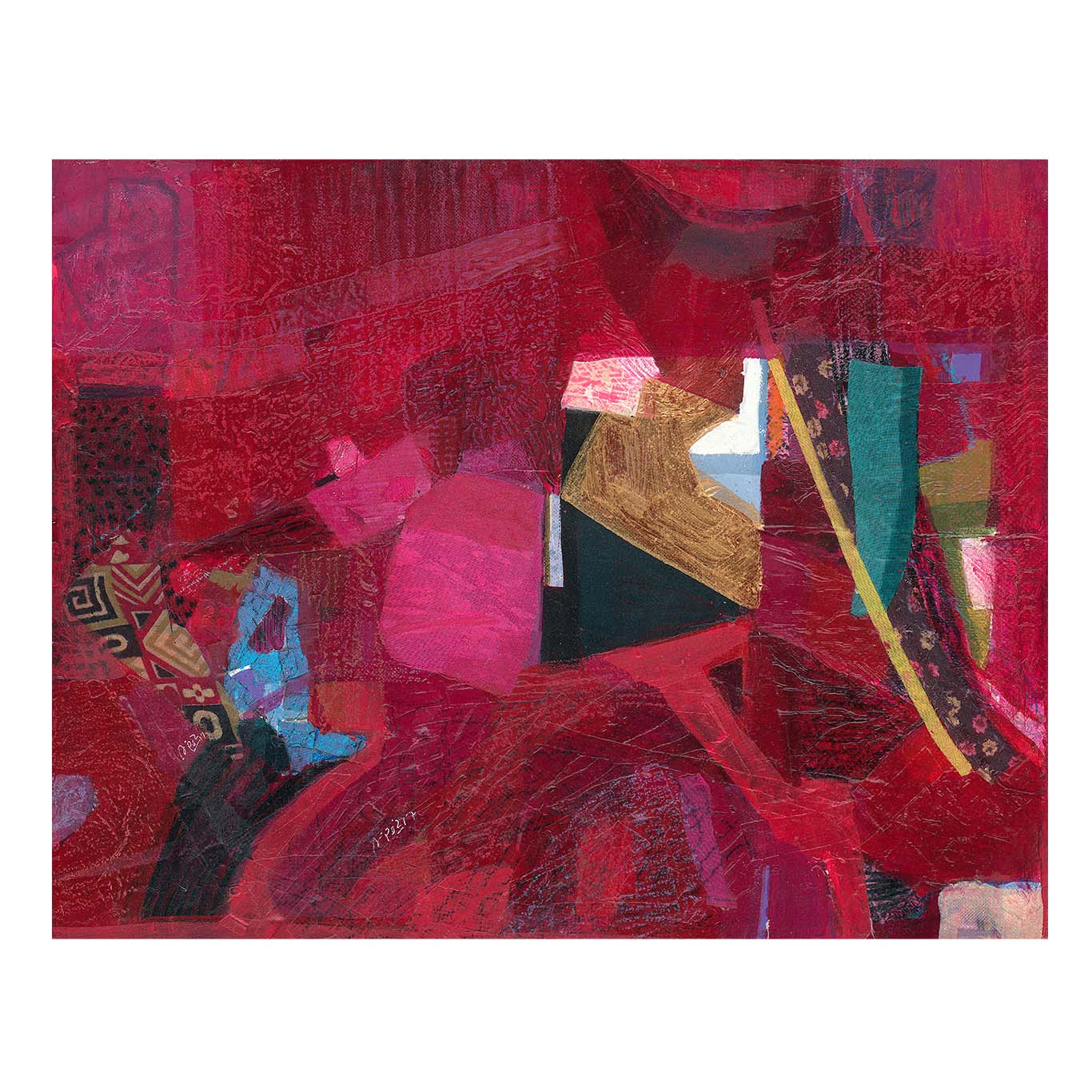
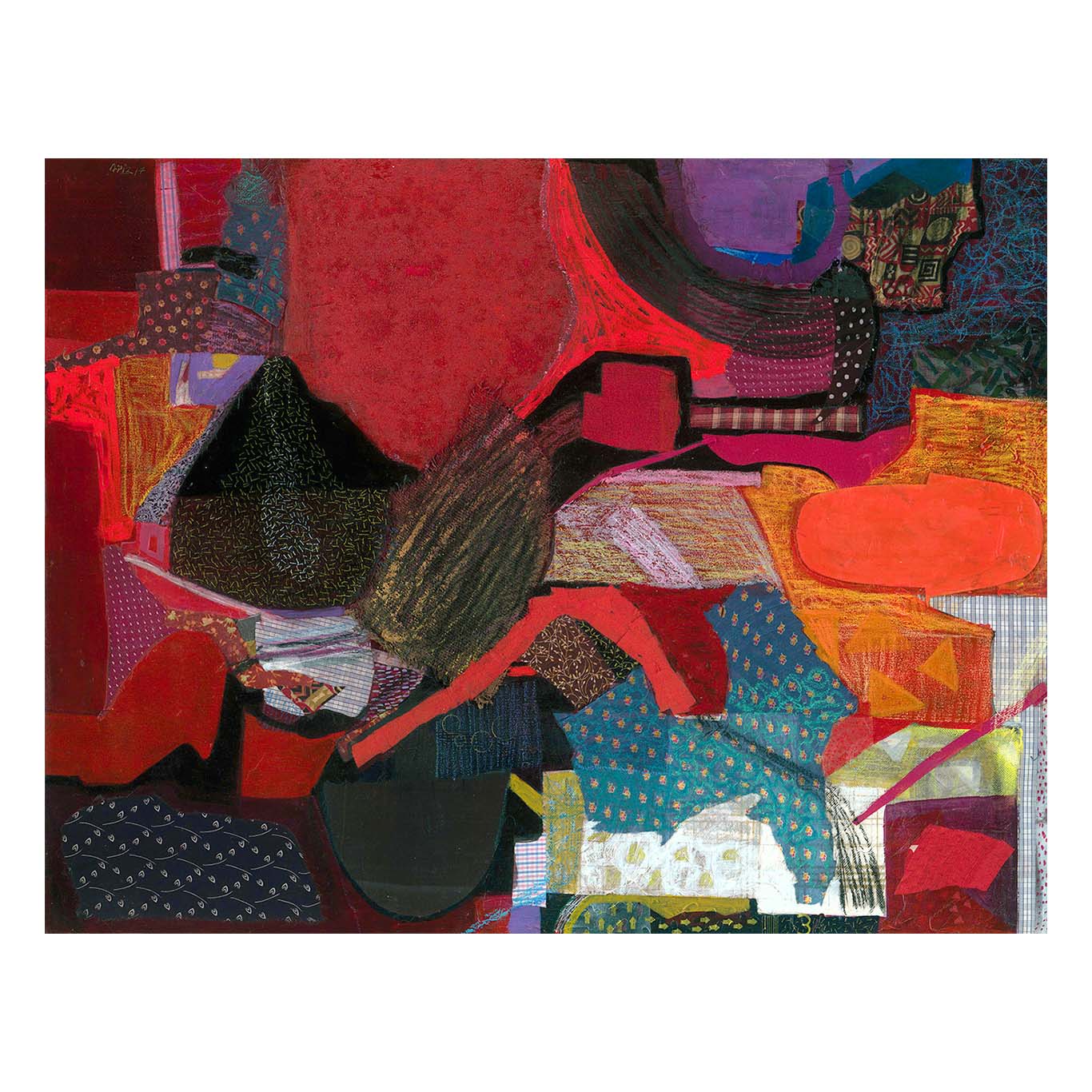
Early Environment and Attraction to Abstraction
Growing up in this atmosphere, surrounded by music, dance, and various forms of art, he found himself naturally drawn to abstraction. He experiments with new media and incorporates them into his visual language. Materials like cloth, rice paper, mixed media, and especially paper pulp have become vital tools in his creative process. Sometimes, to bring out texture, he burns parts of his paintings. This act of burning is not destructive; it is transformative. It allows a deeper dimension to emerge, much like observing the world from a bird’s-eye view. That perspective helps him blur the line between realism and abstraction.
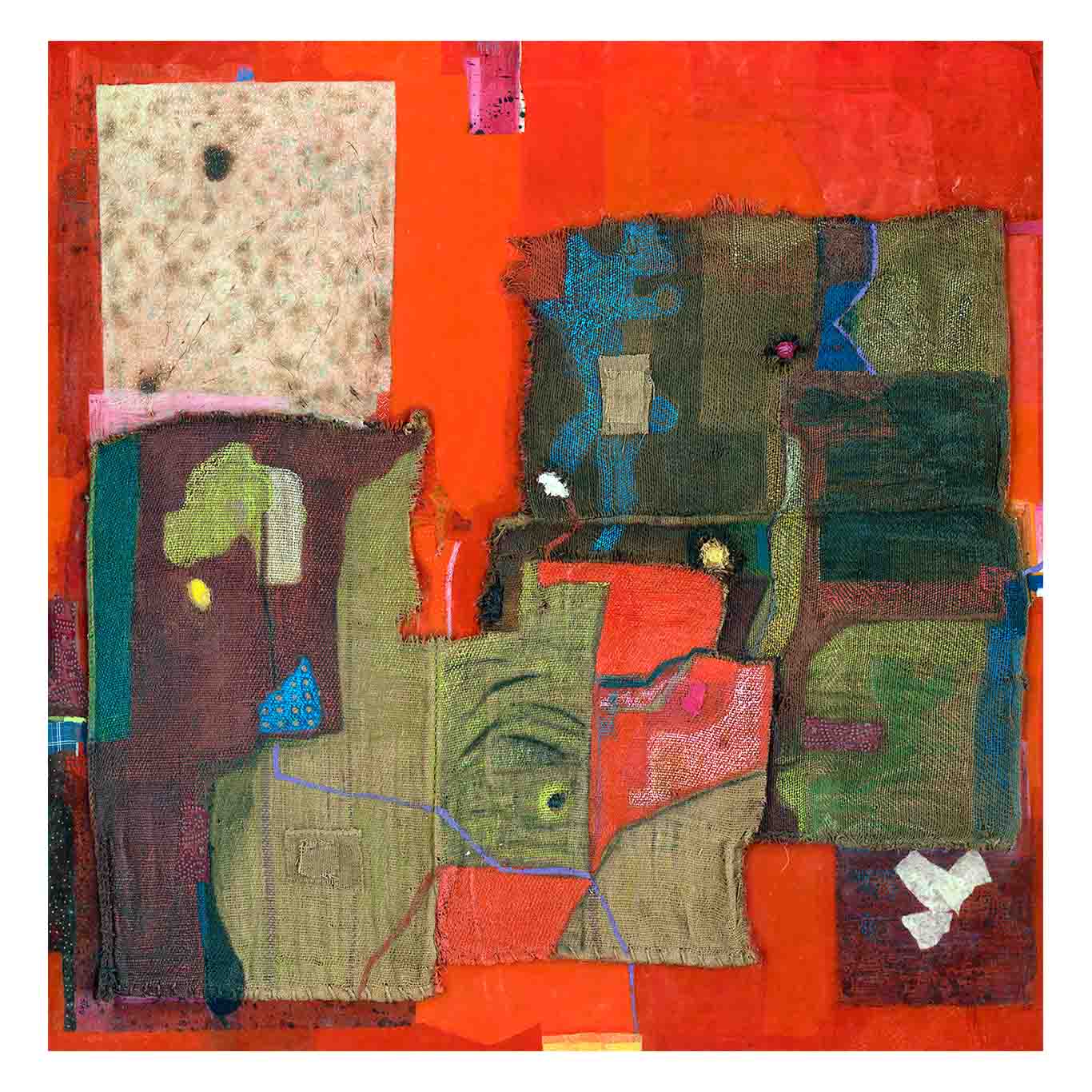
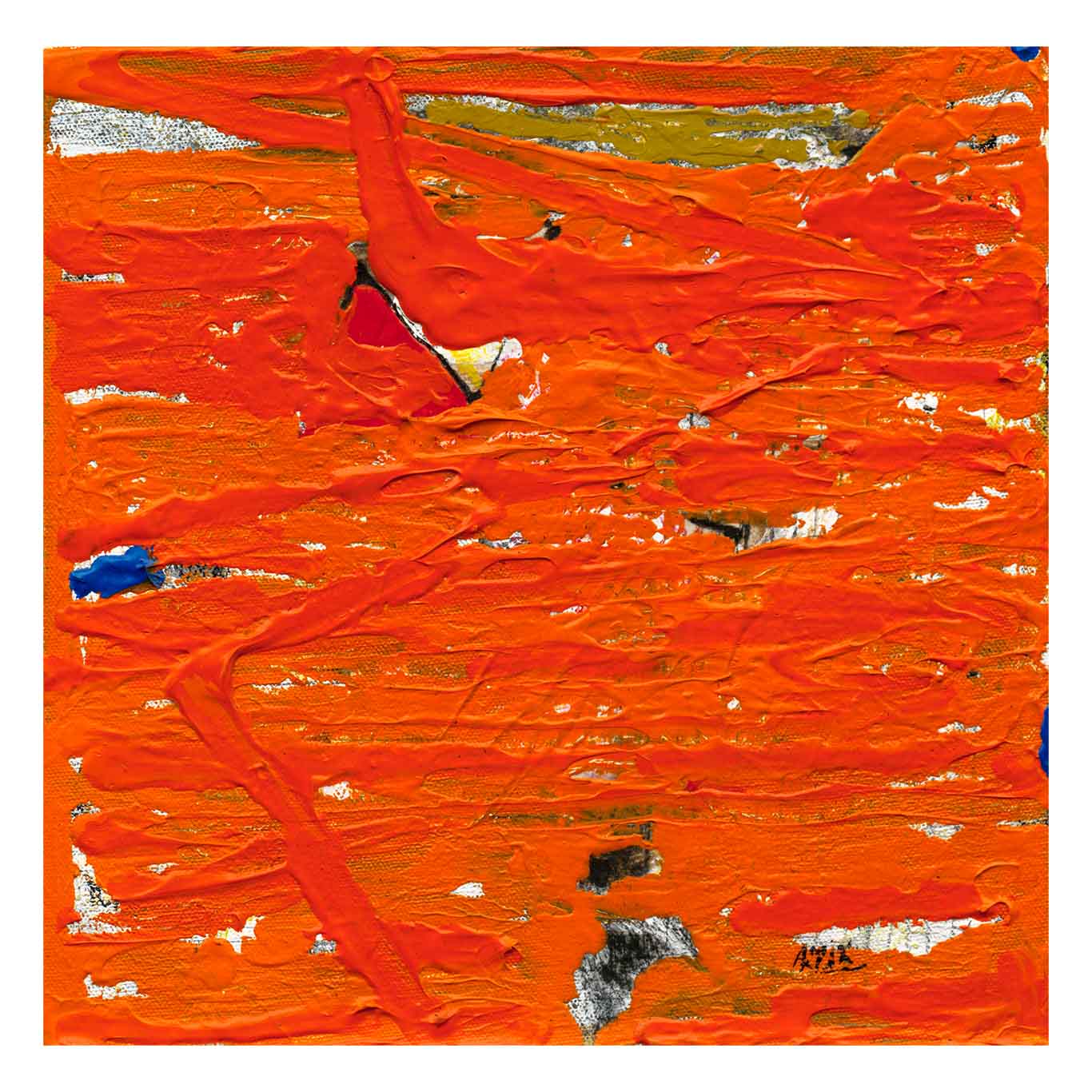
Symbolic Materials and Techniques
In some of his works he uses nails to symbolize the bond between himself and his art, the connection among him, the surface, and the subject he is working on. Elements like copper wire, vibrant colors, and a variety of textures all find space in his compositions. Whether it is acrylic, crayons, or charcoal, he uses whatever materials he has at hand. Sometimes he uses elements purely symbolically, such as geometric forms, words, and motifs, as vessels to carry historical thoughts or memories that feel like extensions of his being.
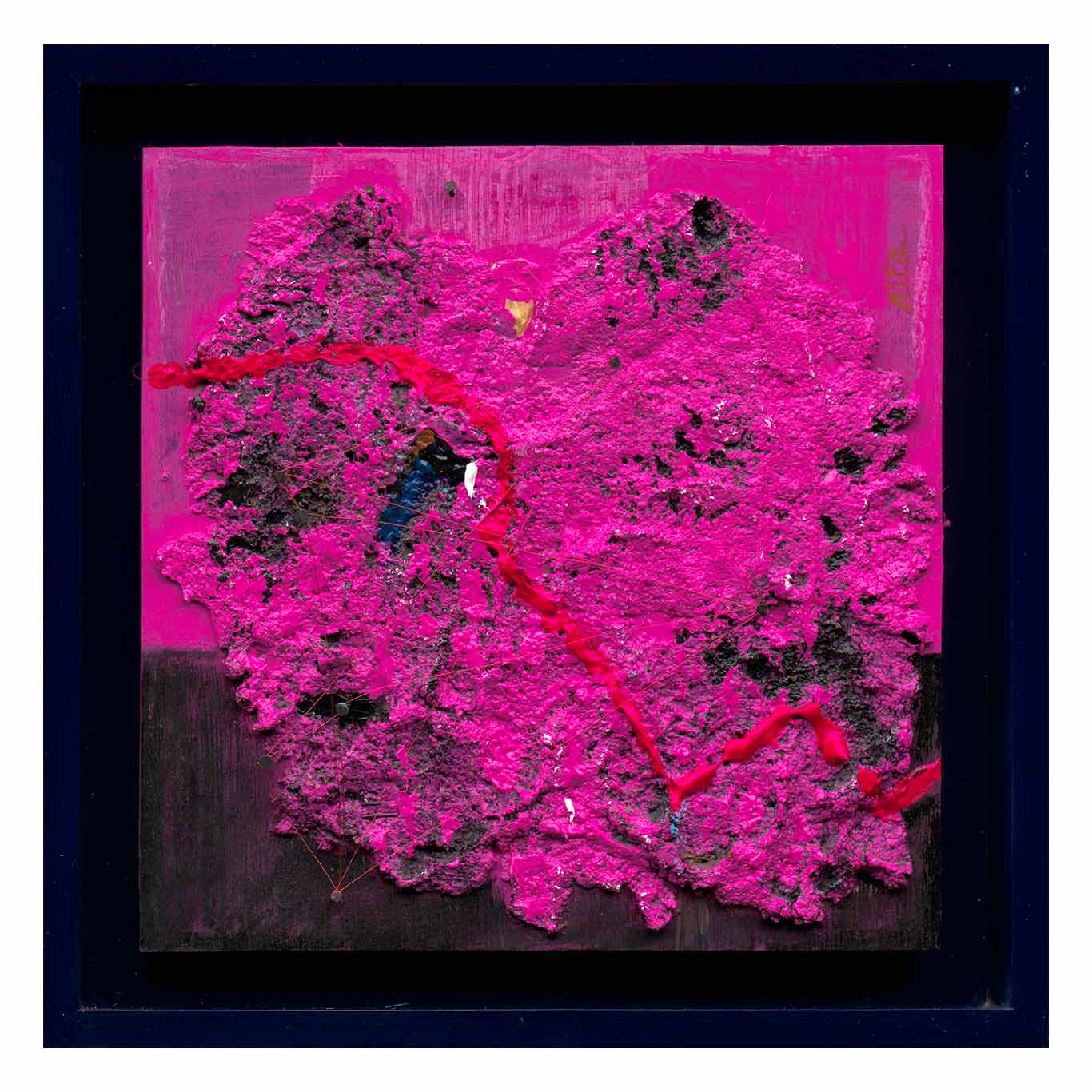
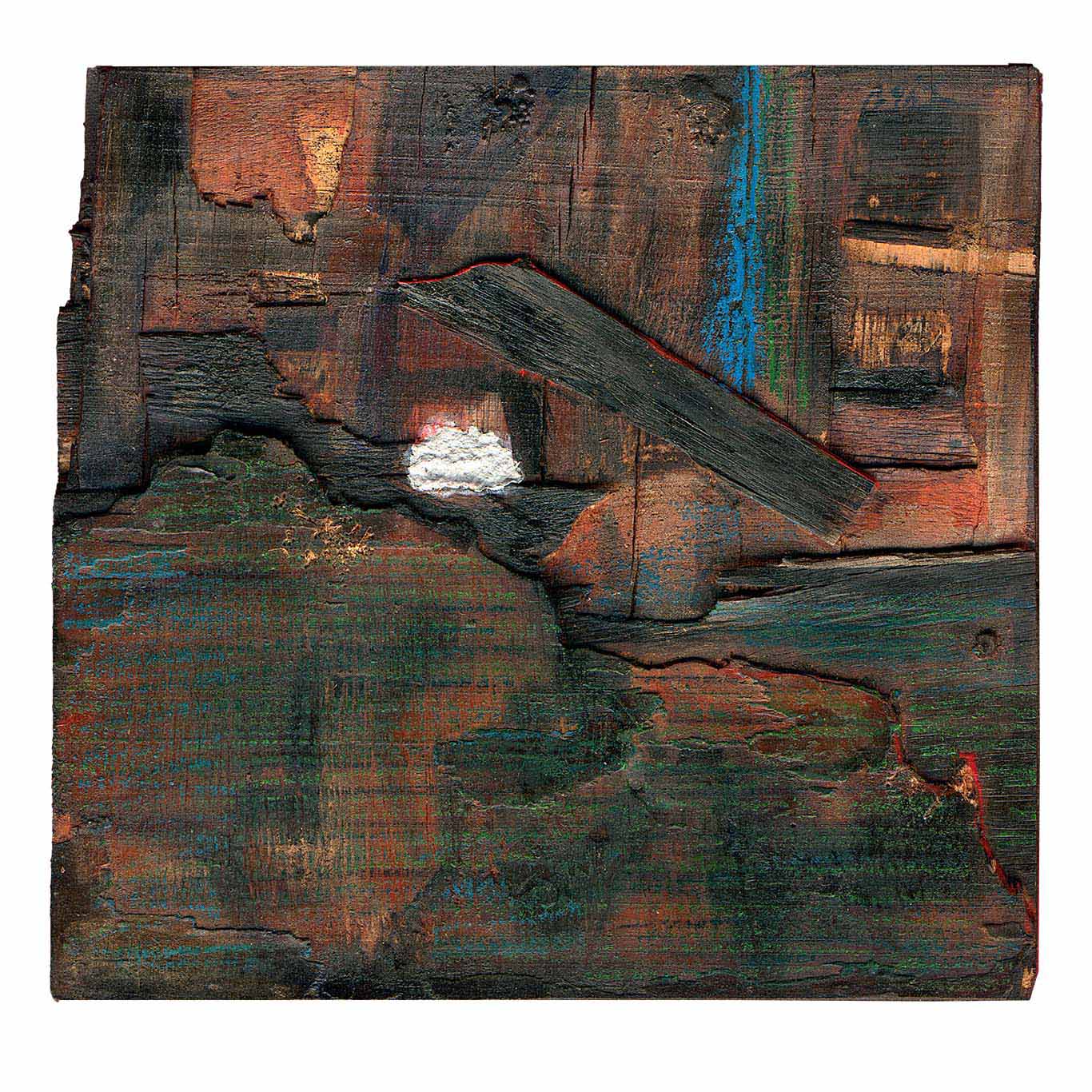
Color as Emotional Voice
Each color, in his view, has its own emotional voice. Colors attempt to communicate something symbolic, something emotional. Depending on his emotional state—mostly content—the colors shift: his red series reflects intensity and power, while his blue series represents calm and reflection. He has also used natural powders, soil, and dust, materials that remind him of childhood play. Each memory lives in his art as a quiet emblem, never a mere ornament. During the process of creating, he employs not only colors and textures but also lines, words, and other visual elements to represent his inner feelings and experiences. These small yet significant elements become bridges connecting his art to society.
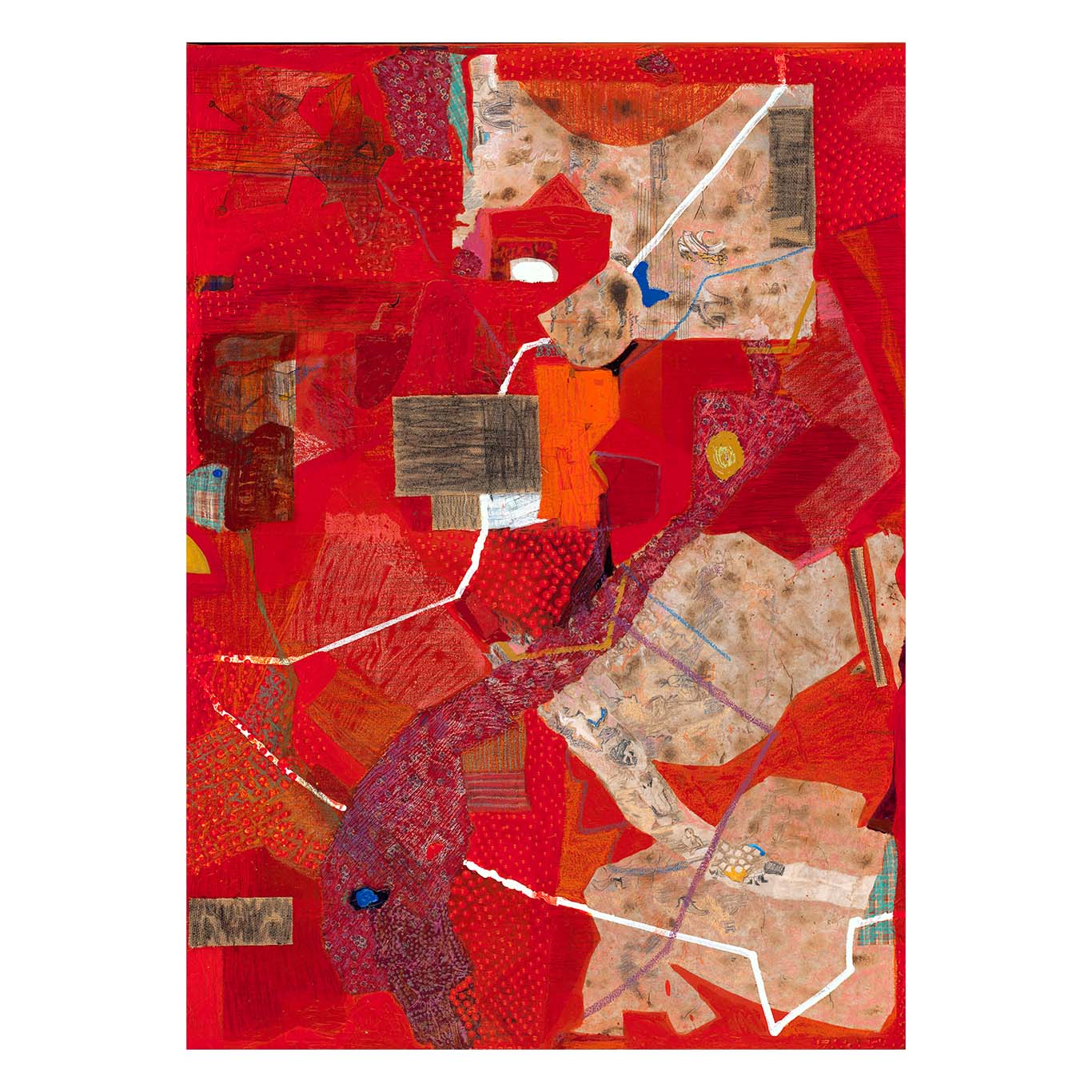
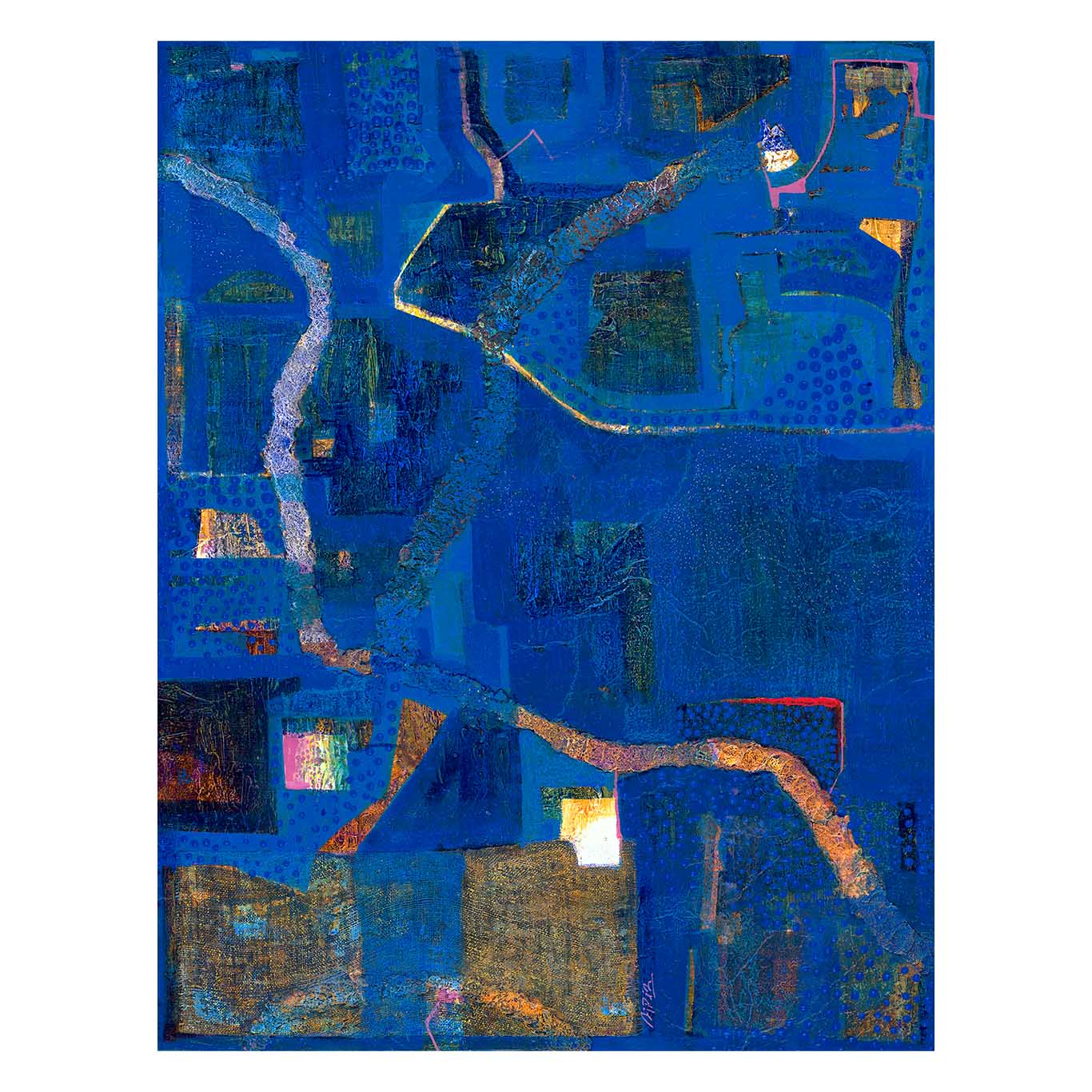
Boundless Media and Pandemic Resilience
He often feels that the conventional idea of media imposes boundaries, but he believes that art requires none. Whatever is accessible can be part of a painting. This belief was reinforced during the COVID-19 period, when he lacked both materials and equipment. Yet even during that long gap he continued to create using what was available, such as wood, copper wire, nails, and other everyday items. These materials gradually became integral parts of his work, evolving from mere resources into subjects and objects of his art. Over time he began to see these elements not just as tools but as companions in his creative journey.
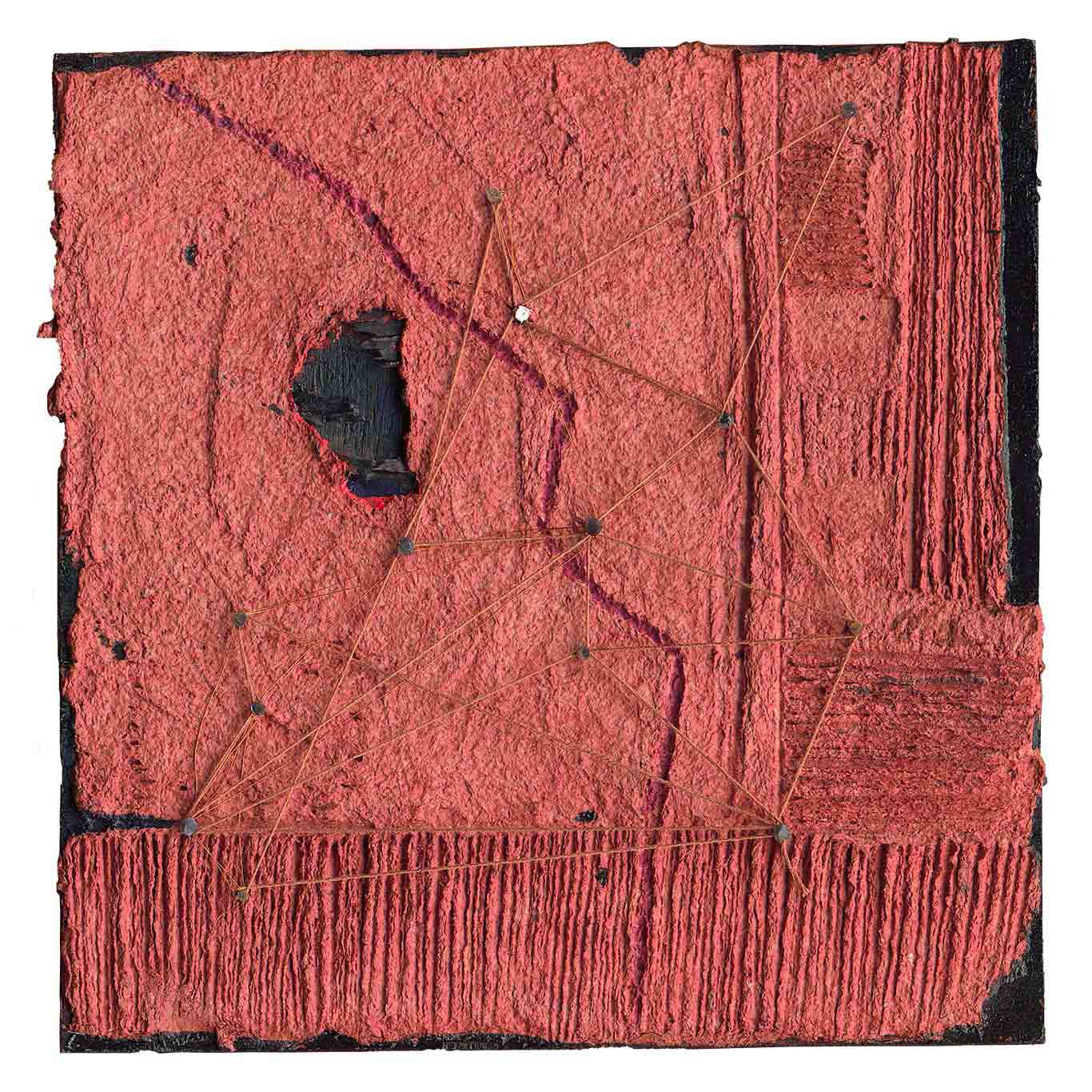
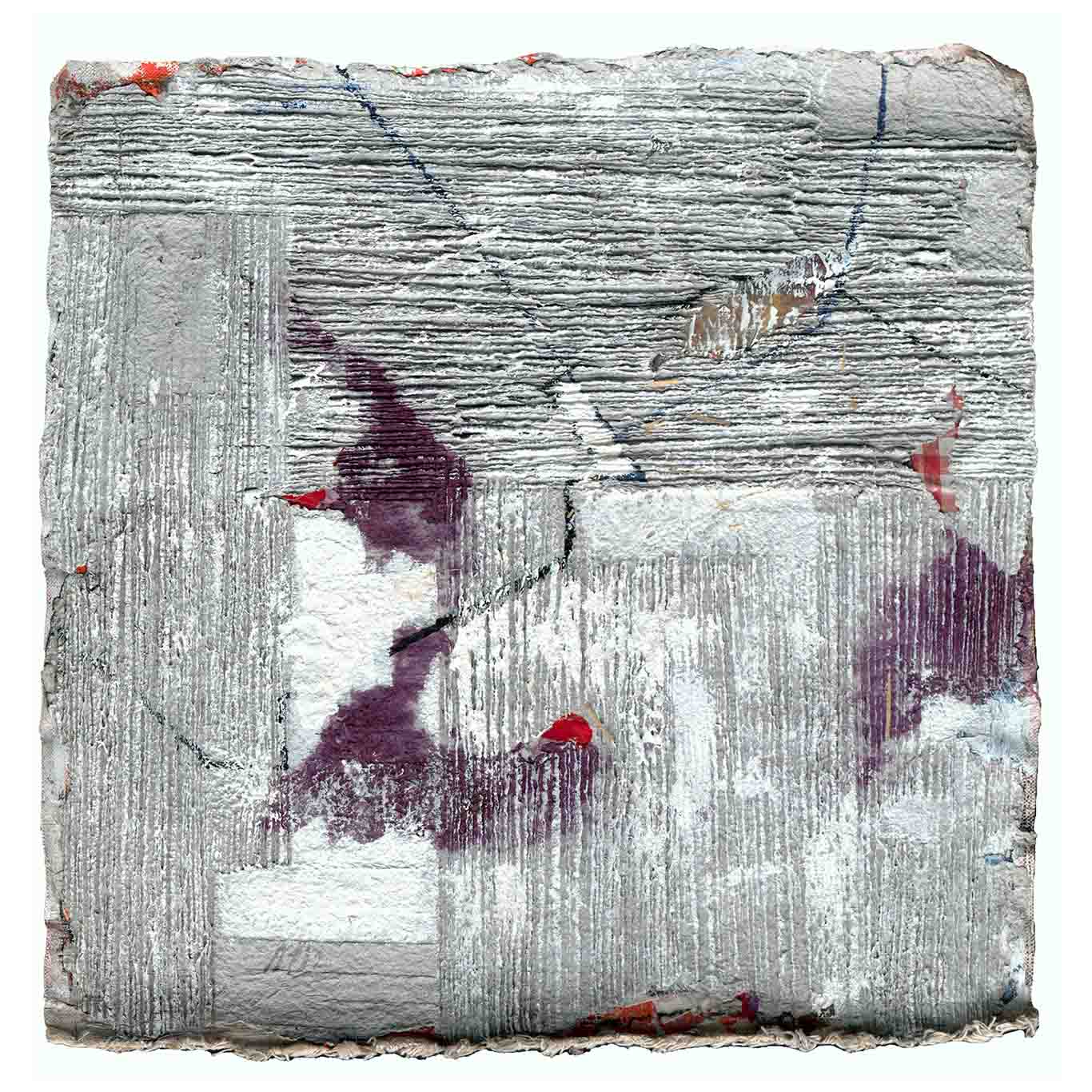
Nature, Perspective, and Abstract Forms
He draws heavily from nature and the immediate world around him. He uses symbolic words and forms to express what he sees and feels. Many of his works are imagined from a bird’s-eye view. He envisions himself floating above the land, observing people and landscapes below. This is not just a visual exercise; it is a way to see through the eye of the soul. These artworks are the result of dedicated effort, where geometric forms take shape with a gentle touch of abstraction. Alongside these forms, elements from nature, such as leaves, and parts of the human body emerge in abstract forms, brought to life through expressive colors and flowing lines.
Garden of Balance and Harmony
The painting holds a natural balance, no matter how it is viewed (vertically, horizontally, or even as a perfect square). It feels like a garden in bloom, where leaves, shapes, and forms blend harmoniously. In fact, some parts of the human body subtly echo the shapes of leaves, seamlessly becoming part of this visual garden.
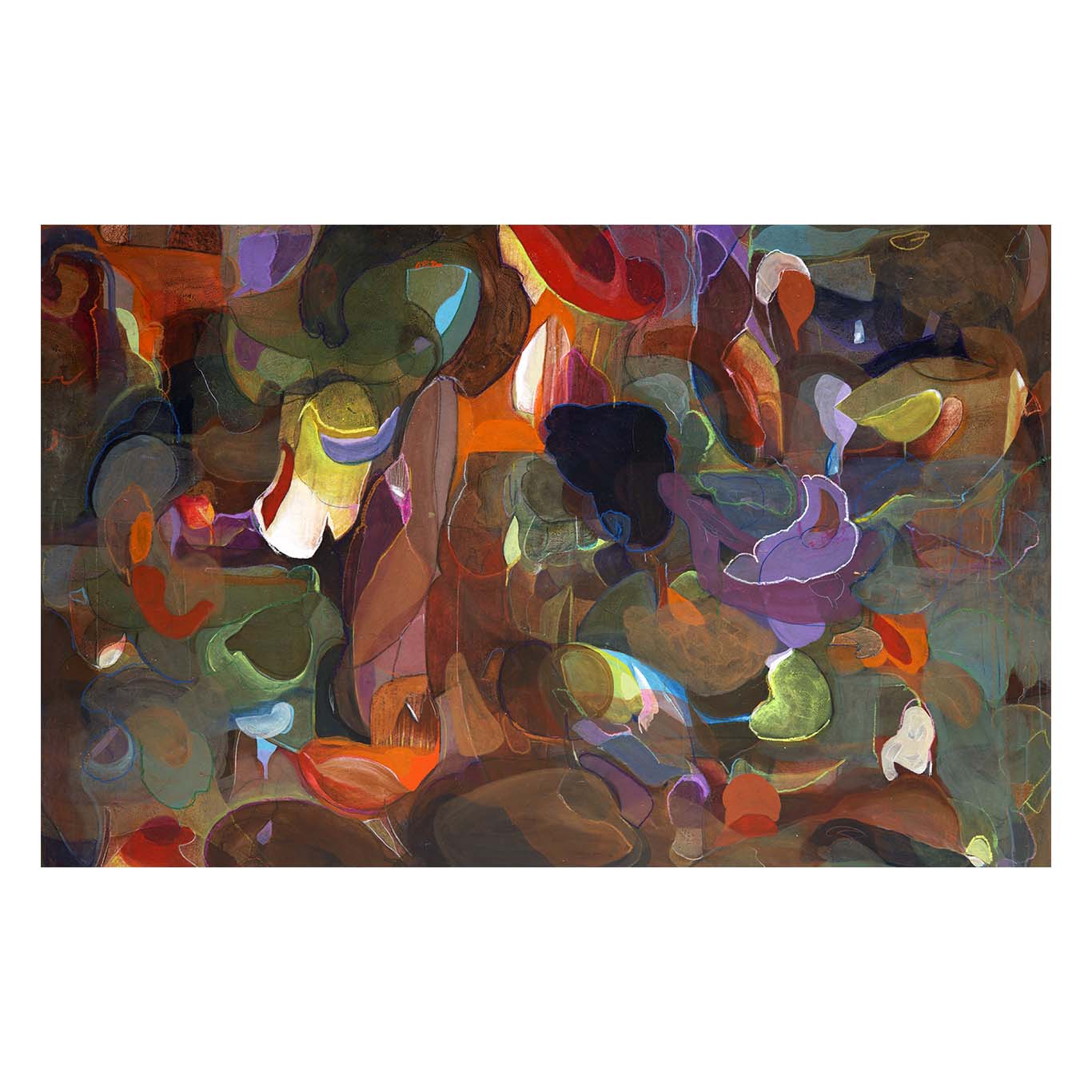
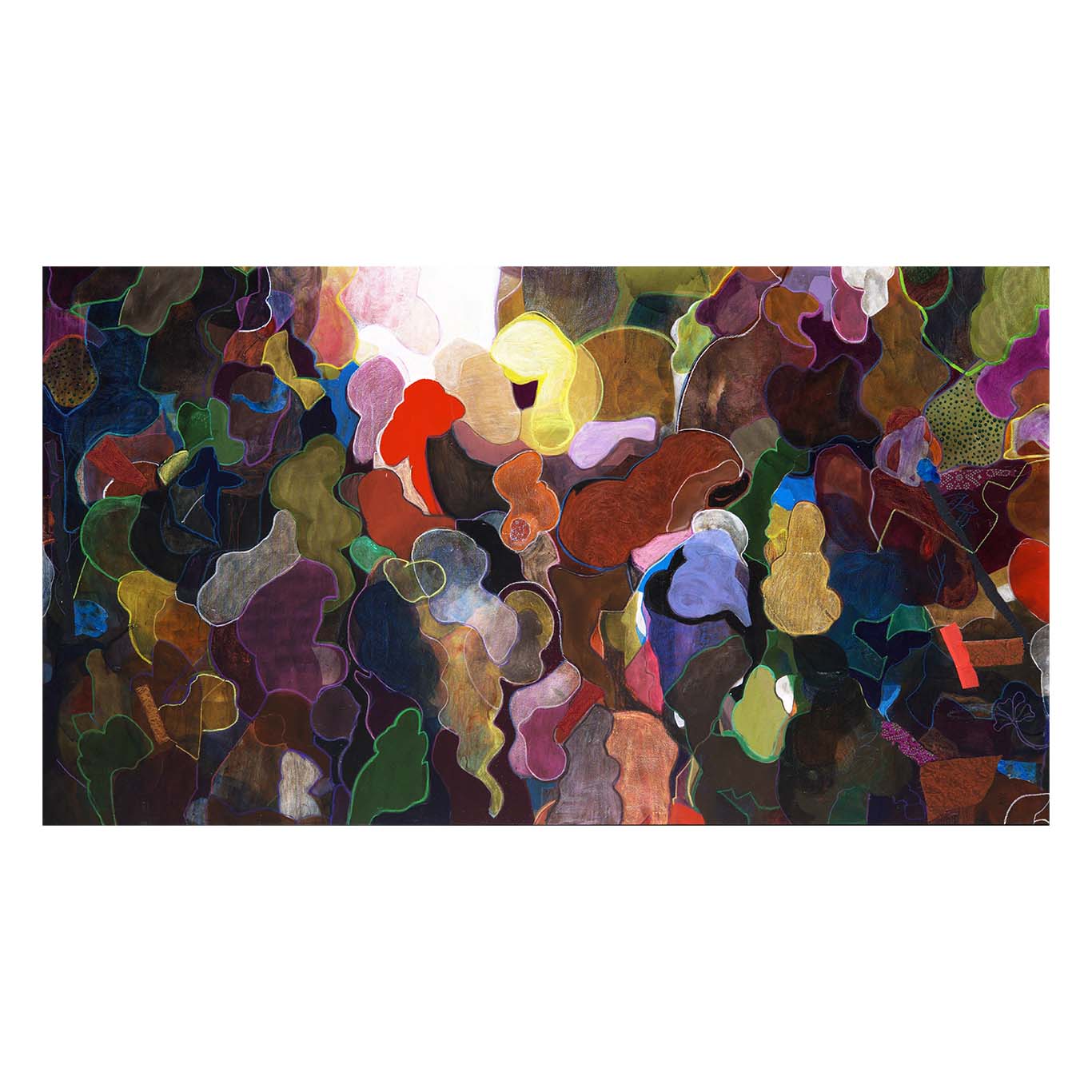
Depth through Transparency and Light
Interplay of Color, Line, and Form
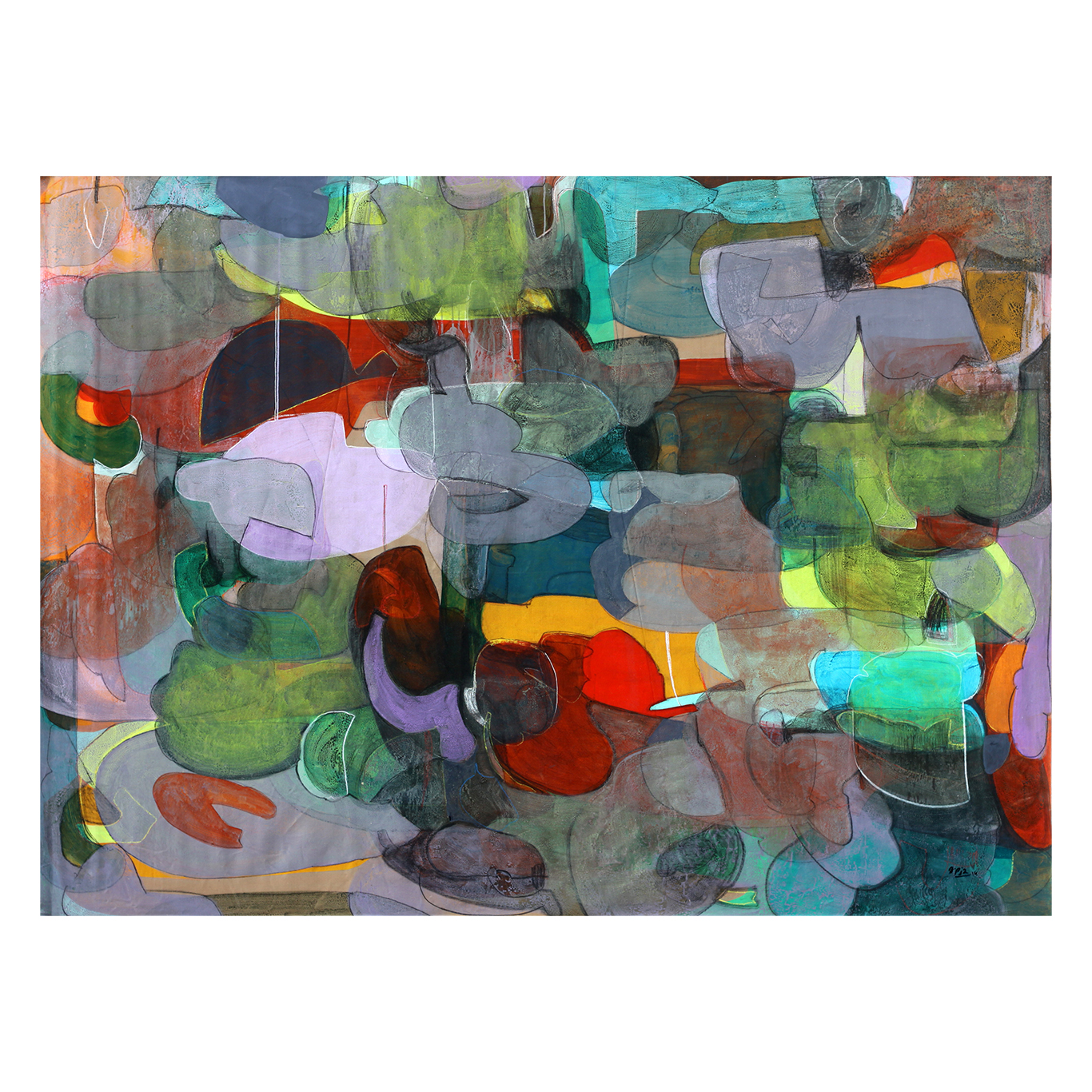
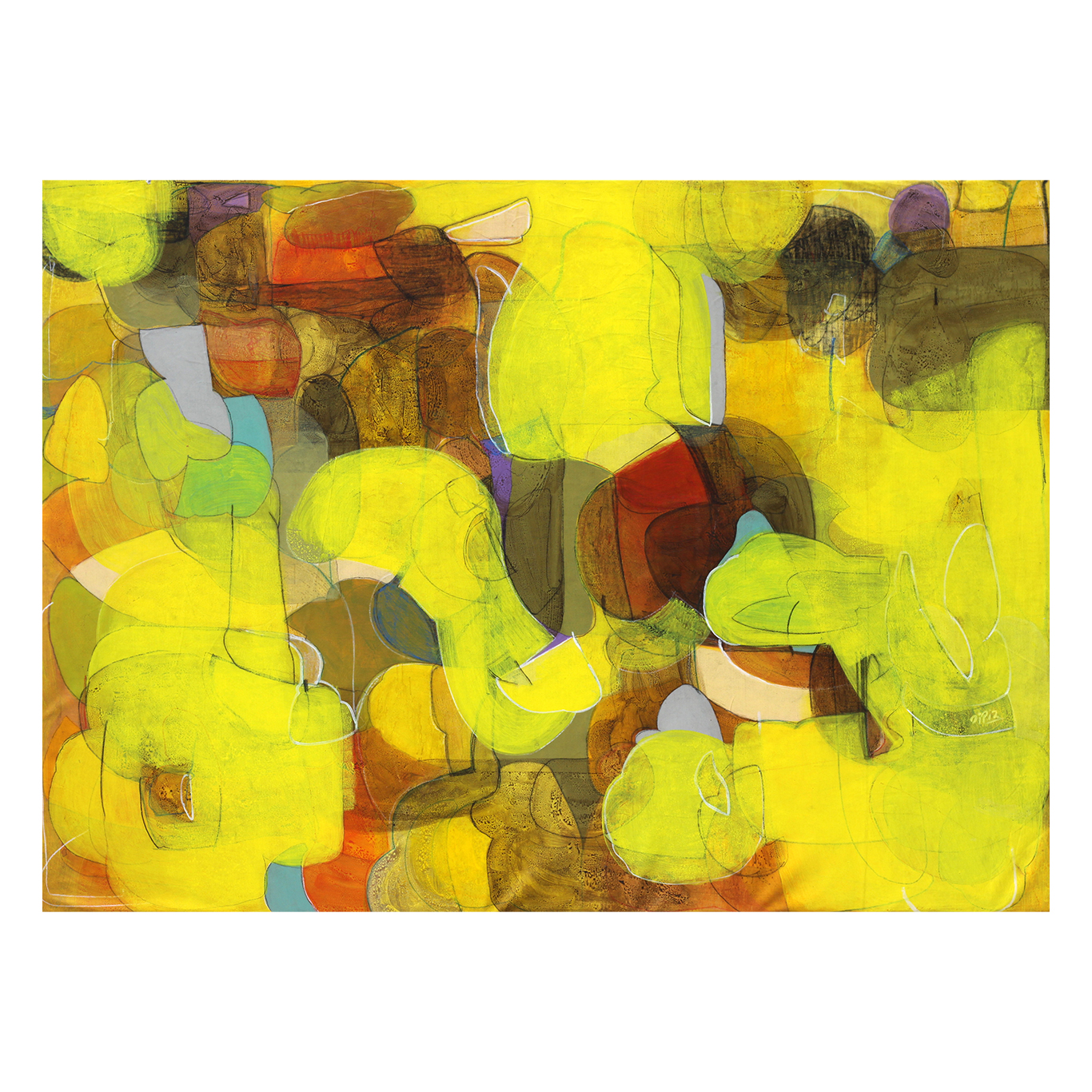
A key highlight of the painting is the sense of dimension created by the play of inner and outer colors. Transparent layers in certain areas give the impression of overlapping leaves, just like petals and flowers in a garden where colors shift and blend with grace. Light and shadow are carefully balanced, adding depth and movement to the composition.
Bright, bold colors dance with softer, quieter tones. In some areas, delicate lines trace the edges of forms, bringing them to the foreground, helping the viewer distinguish among colors, leaves, and shapes. It is this beautiful interplay of color, line, and form that gives the painting its rich visual depth and sense of harmony.
Influence of Music and Human Emotion
Throughout his journey he harmonises with people, animals, and the rhythms of music. Music plays a crucial role. Its rhythm and melody influence his strokes and textures. Just as music flows, he tries to allow colors and elements to flow in his compositions. He connects this flow with materials like paper pulp, wire, and nails, letting them align with the same energy as a musical composition. He sees different colors in people, and those colors become his subjects. Their internal emotional states inform his creative process.
He gets inspired by the people around him—the way they walk, their clothes, the colors they wear, their expressions; all of it inspires him.
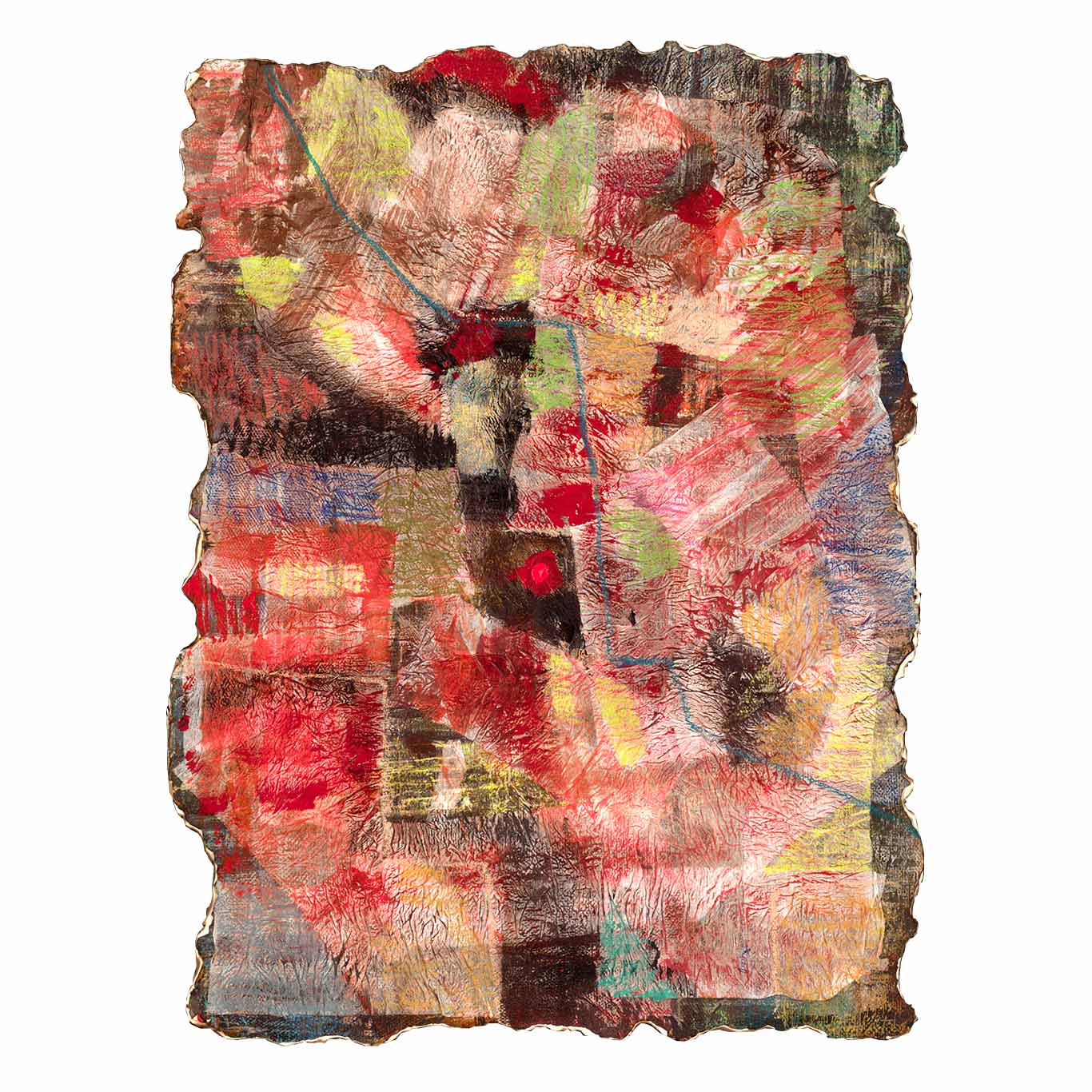
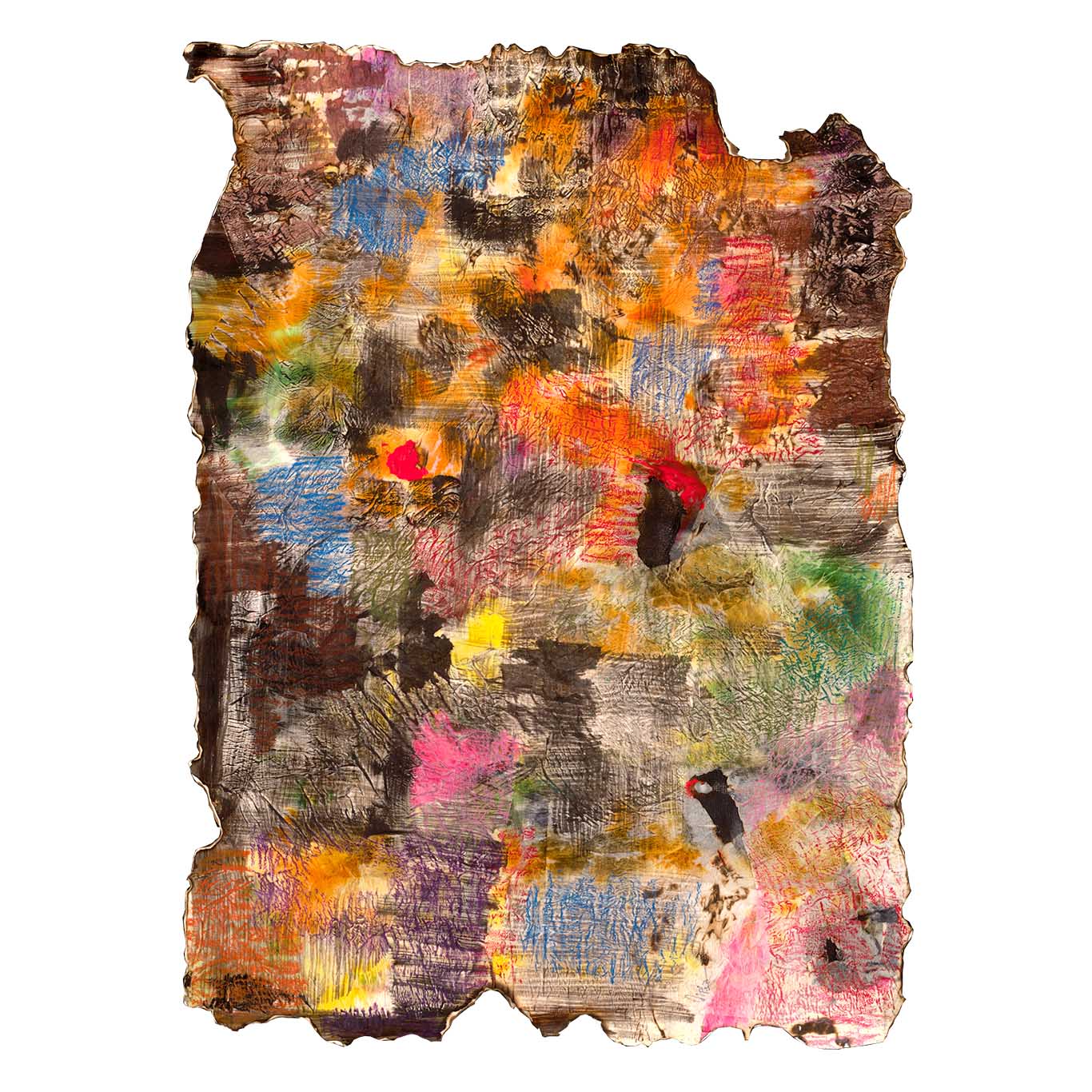
Academic Roots and European Exposure
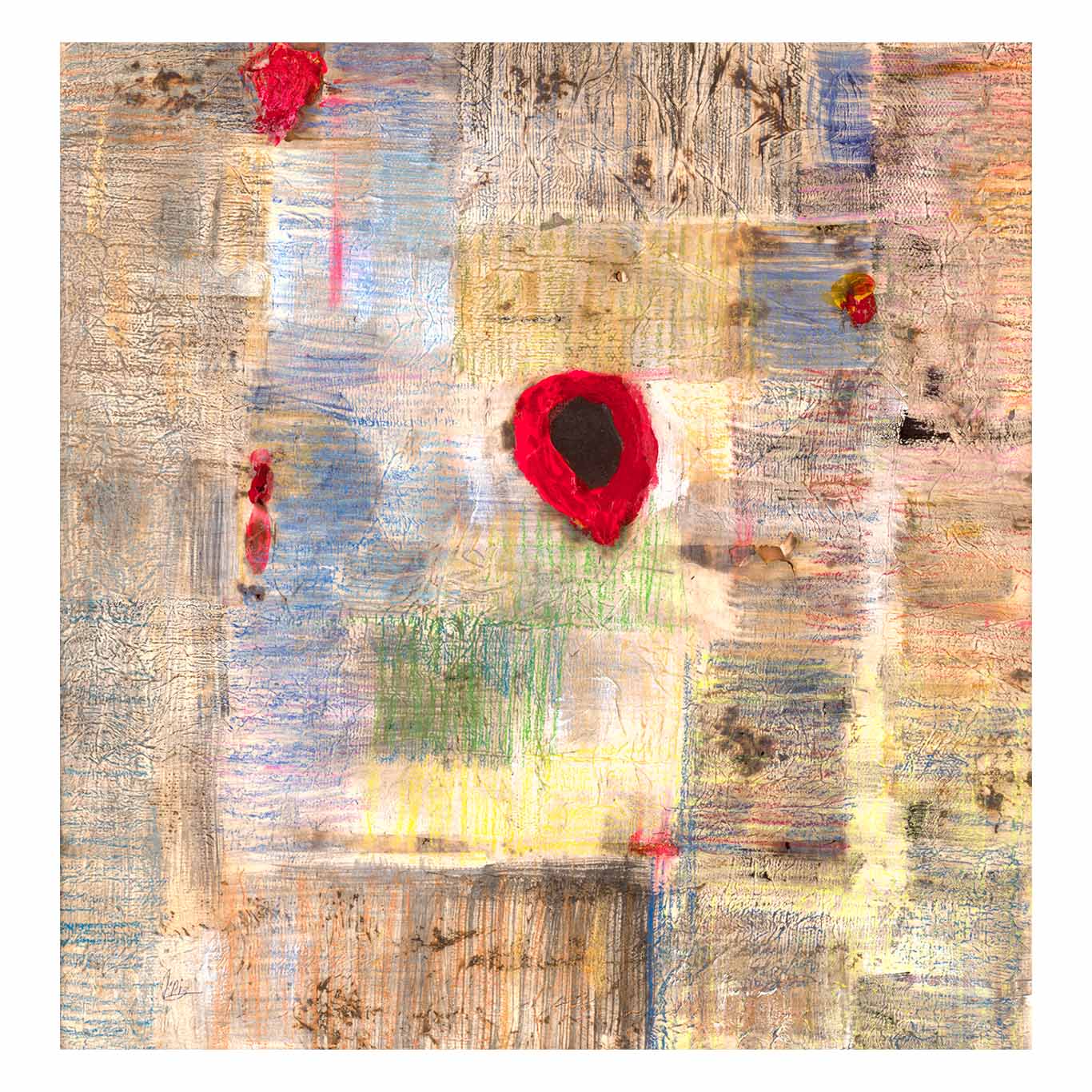
He completed both his bachelor’s and master’s degrees at Indira Kala Sangeet Vishwavidyalaya. After graduation he moved to Mumbai to explore the next phase of his career. He spent about two years in the city. Then, thanks to an award he received, he had the opportunity to travel to Europe. That experience changed him wholeheartedly. He visited Paris, Venice, Rome, Florence, and explored renowned museums like the Louvre, Musée d’Orsay, the Picasso Museum, and various modern art galleries.
Impact of Masterworks and Alberto Burri
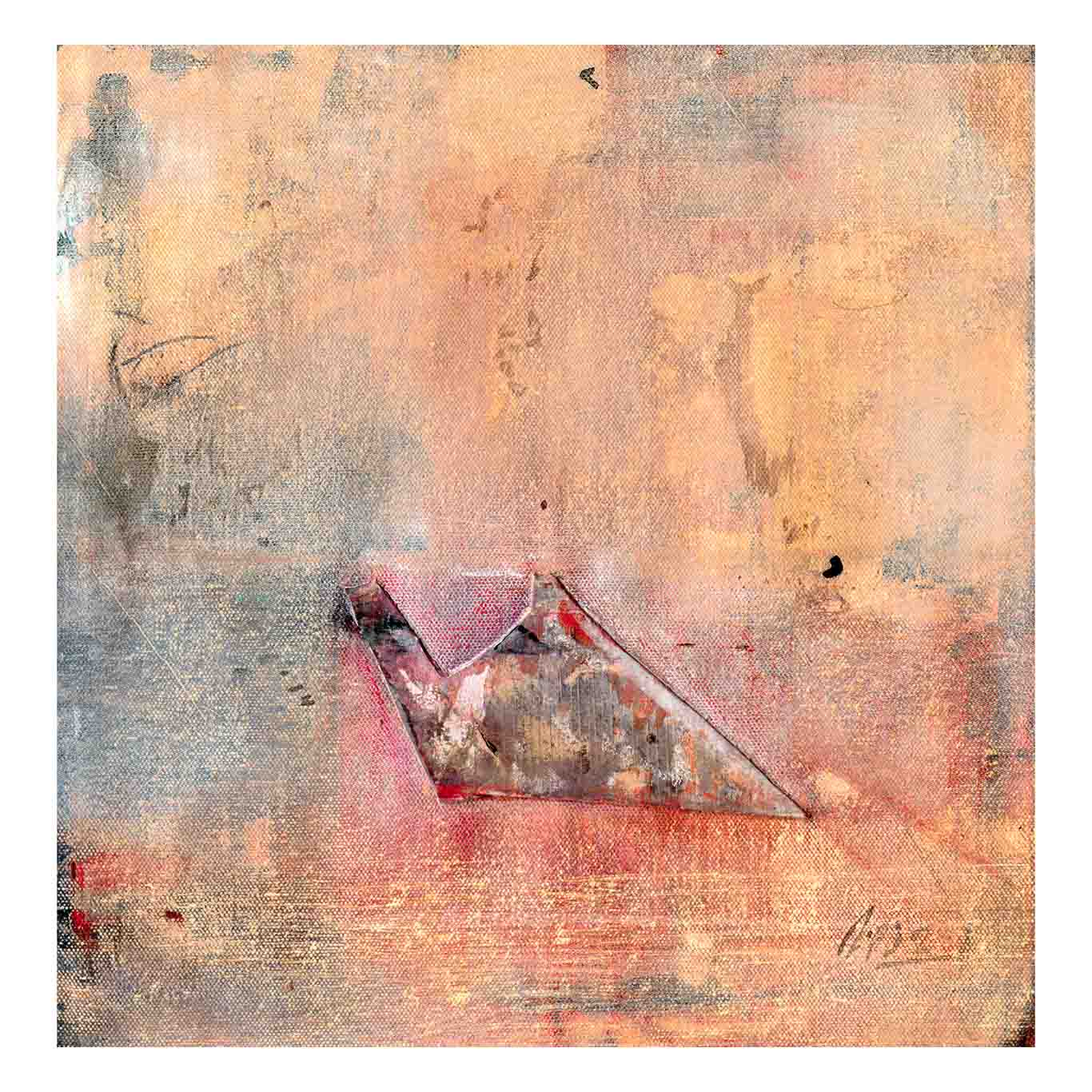
Seeing in person what he had studied in books, such as the Colosseum, the Eiffel Tower, and countless other historic sites, left a lasting impression. He also discovered artists he had not encountered during his college years. One of them, Alberto Burri, became a strong influence on him. Although Burri was not a full-time artist, his use of elements spoke volumes. Burri’s approach pushed him to explore elements and materials in a deeper, more meaningful way.
Evolution of Artistic Philosophy
Abstract Material Series
This path, shaped by his childhood immersion in music and the natural world, continuously informs his work. Earlier in his student life he felt confined by the belief that painting was only about colors and pencils, but as he matured, especially during his time in Europe, he realized that true art reaches beyond the surface. It conveys deep emotional and symbolic layers.
In his “Abstract Material Series” he uses a variety of unconventional materials, including jute, denim, old sarees, rice paper, charcoal, watercolor, pencil, and acrylic. Each material tells a story. He belongs to a small region surrounded by fields, rivers, and mountains. He lives among rural communities and people from a wide range of social backgrounds. Being from a Rajput family, his personal history intersects with rural traditions and spiritual rituals.
Transforming Rural Landscapes into Abstraction
Memory-Infused Materials
When he travels to villages or interacts with rural landscapes, questions arise: How can real, natural scenes be transformed into abstraction? How can he imagine and present them differently? He attempts to answer this through unique angles and perspectives in his paintings. He believes that while realism can depict reality, abstraction can touch psychological and symbolic realms. That is why he uses materials that carry their own essence and identity.
Most of his materials are not new. He uses things that hold emotional value, like his mother’s sarees and his father’s clothes. It is his way of holding their blessings with him. These are memories transformed into textures. Jute, for example, becomes a way to symbolize rural life. By assembling these elements, he attempts to create abstract landscapes that are deeply personal yet universally ringing.
Culmination of Influence and Identity
In every form and texture, he tries to show what has shaped him: his past, his present, his surroundings, and his soul.
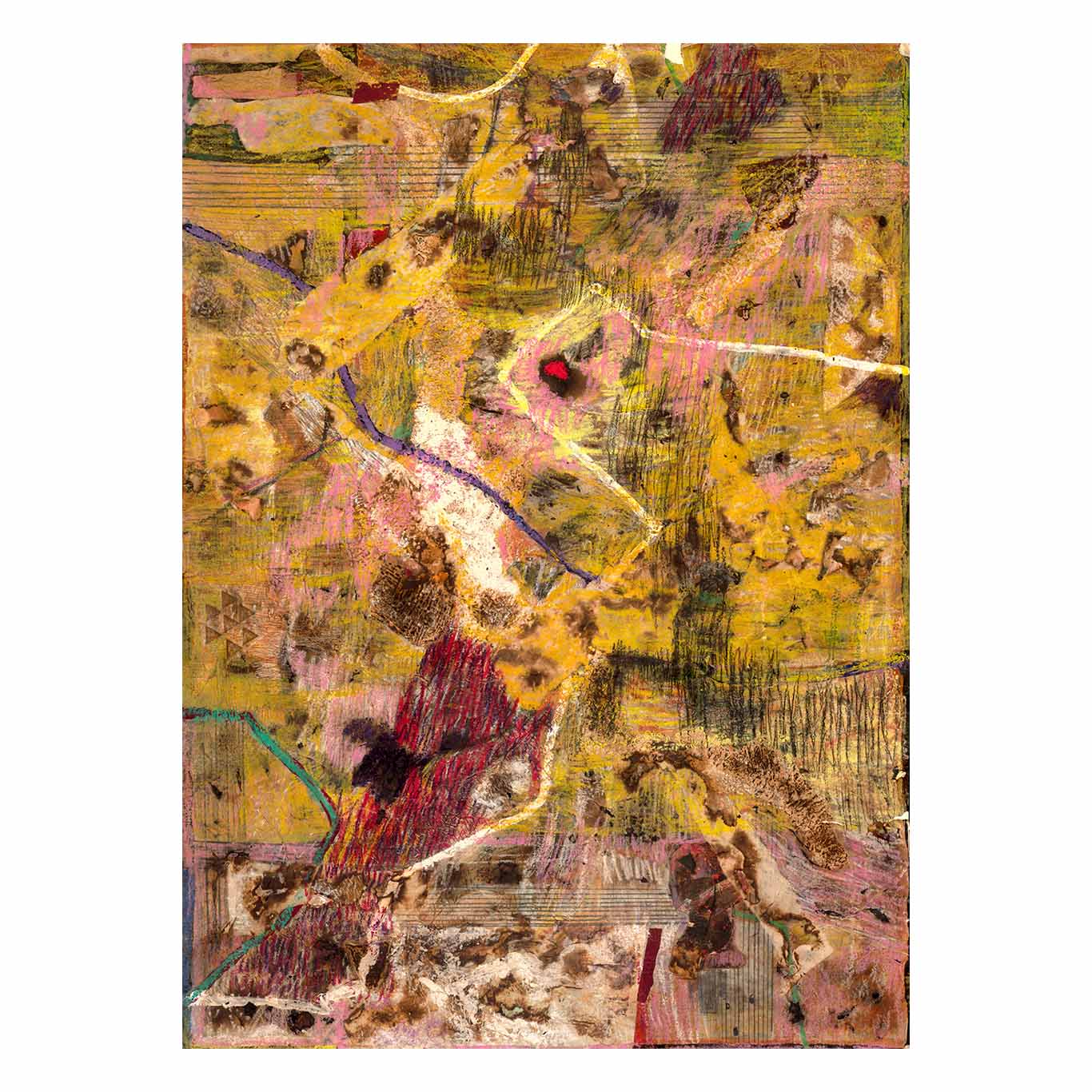
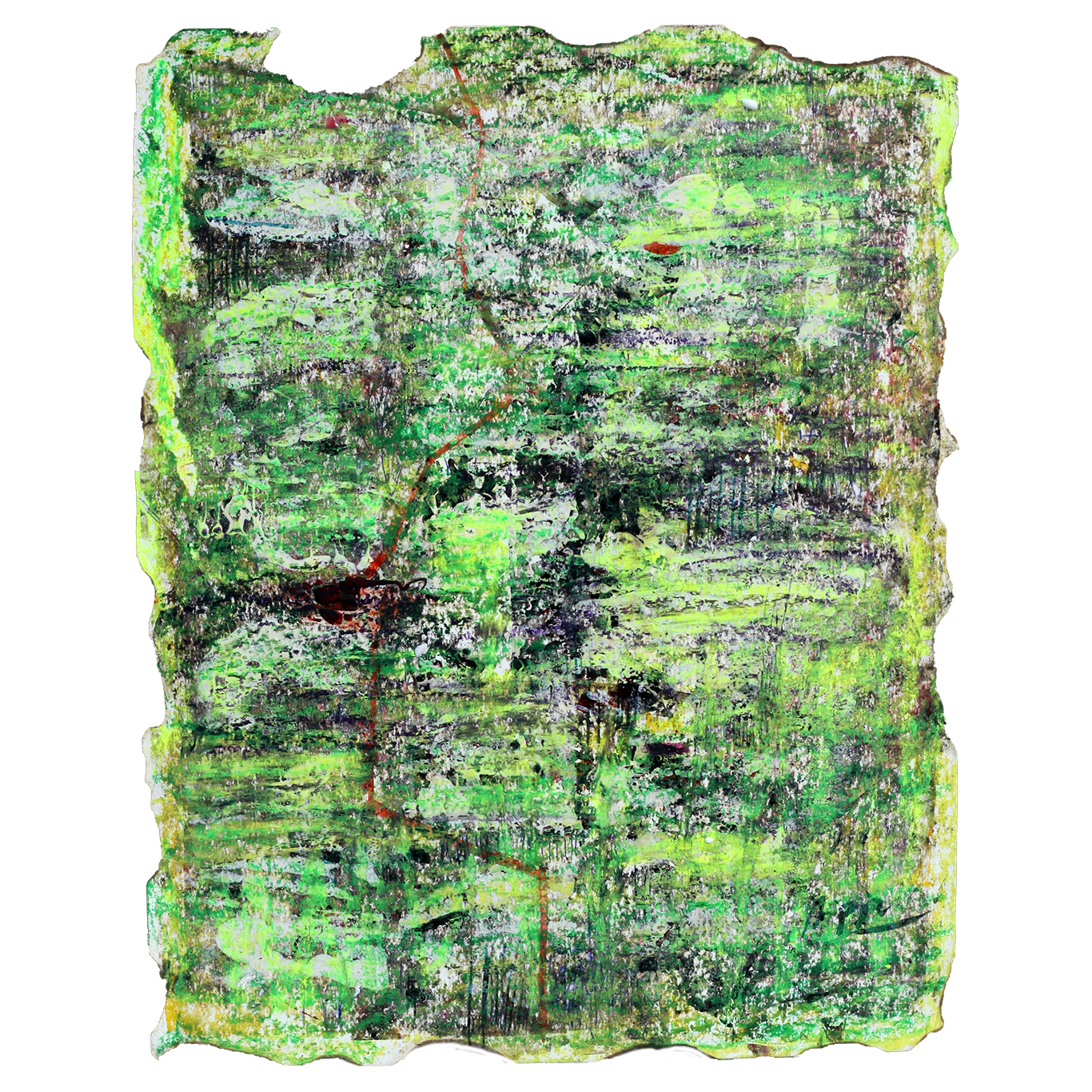
Photos and Text © Chaitya Dhanvi Shah


